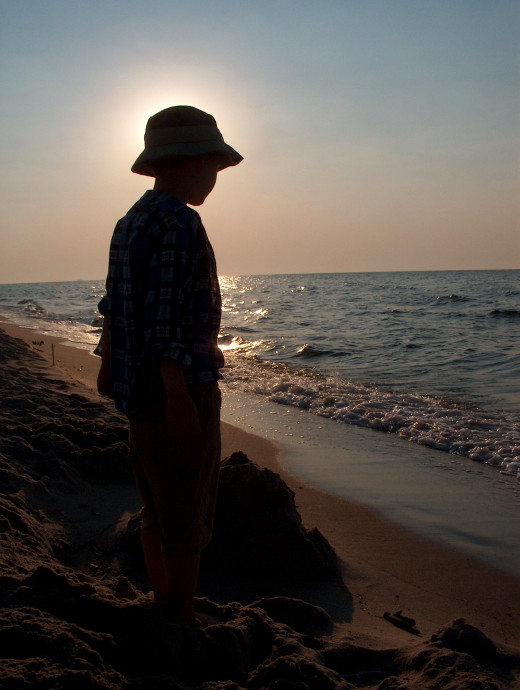Photosensitivity Types and Treatments

Photosensitivity is a condition which refers to an increase in the reactivity of the skin to the sun. The skin is a carefully crafted interface between the body and the outside world. When the skin is intact, it is infection proof, nearly waterproof and is filed with protective mechanisms. The harmful rays from the sun threaten the health of the skin. Normal skin is usually highly variable in its capability to resist any damage by the sun. Skin is mainly protected by its natural skin pigmentation. If there is an increase beyond what is considered the normal variation, then it is known as photosensitivity. It is also known as sun allergy. It is basically an immune system reaction that is triggered by sunlight.
The causes or factors that can trigger off photosensitivity are many. It could be due to certain diseases, herbal preparations, drugs, cosmetic or perfume components. There are several types of reactions to sunlight; these could be photoallergy, phototoxicity, solar urticaria, chemical photosensitivity and polymorphous light eruption. In addition to these, there can be cases of premature aging or cancer even in normal skin due to prolonged exposure to the sun. These effects are accelerated in people who have photosensitivity.
Types of photosensitivity
Phototoxicity
This is a severely exaggerated to the rays of the sun caused by a new chemical in the skin. A person suffers from severe sunburns which lead to the formation of blisters. Drugs are the triggering factors for this condition. These include certain antibiotics, oral diabetes medication, tranquilizers, cancer medicines, diuretics and some dermatologic drugs.
Photoallergy
This produces an intense itching rash when the skin is exposed to the sun. due to the scratching, patients develop chronic skin changes called lichen simplex. Certain agents which cause phototoxicity are also the causative factor for photoallergy.
Polymorphous light eruption
The symptoms of this resemble the symptoms of photoallergy due the intense itching rashes one experiences on exposure to sunlight. However, this condition decreases with continued light exposure and therefore is seen mostly in the months of spring. There do not seem to be any identifiable chemical involved which triggers polymorphous light eruption.
Solar urticaria
These are large and itchy red bumps or hives that develop on the skin after only a few minutes of exposure to the sun. These appear within ten minutes of sun exposure and disappear after leaving the sunlight within an hour or two. Headaches, weakness and nausea might be experienced by people who have large affected areas.
Chemical photosensitivity
In this type of photosensitivity, people develop inflammation, redness and sometimes blue or brown discoloration in areas of the skin that have been exposed to sunlight for a brief duration. The reaction levels to the sunlight vary from person to person and depend on the chemicals applied or drugs taken prior to stepping out in the sun. These substances make some people’s skin more reactive and sensitive to the effects of UV rays. In certain cases, the hives develop after continuous itching. This indicates a drug allergy which has been triggered further by the sunlight.
Treatments for photosensitivity
Avoid the sun to the best of your ability
The best prevention method for skin rashes and itchiness due to photosensitivity is sun avoidance. It is extremely necessary to protect the skin against direct contact with the sunlight. This should be done regardless of weather conditions, and even when sitting in shaded areas. The skin should be kept covered with clothing. Sunblock or sunscreen with a high sun protection factor of 30 or higher should be applied thoroughly on all the exposed areas of the skin. Try to avoid going out of the house when the sun is at its peak. It is better to go out early in the morning or late in the evening. Those who have to go out due reason such as work or school should take maximum precautions. Photosensitive individuals should wear wide-brimmed hats and sunglasses when stepping out in the sun.
Make good use of lotions and moisturizers
After sun products, lotions and moisturizers should be applied liberally and frequently to prevent the skin from dehydrating or becoming itchy. Aloe vera gels are really good and helpful in healing sun damaged skin. Cool oatmeal baths may be helpful in relieving intense itching that is associated with photosensitive skin reactions.
Keep a check on exposure to UV light
Other sources of UV light, such as tanning beds or sun lamps should be avoided by people with photosensitive conditions. Fluorescent lamps can be replaced with light sources provided by mediums such as tungsten light bulbs. Patients can benefit by applying UVR absorbing film on the windows of their car and home, since UVR can pass through glass. The intake of beta-carotene can be increased; this will raise tolerance to the sunlight.
Wear protective clothing
Sunlight should be blocked out with an opaque material such as sun protective clothing. Densely woven and dark colored fabrics are the most effective. Shirts or t-shirts with long sleeves and high collars, trousers or long skirts should be worn when going out in the sun. Try to avoid shorts and half sleeves in the summer months even if you are dying of heat. Certain clothes are now labeled with UPF. This indicates the sun protection factor for fabrics.
Medicines
Anti-malarial drugs maybe prescribed in extreme cases of photosensitivity. These drugs have anti inflammation properties. Doctors often recommend paracetamol if the resulting pain from photosensitivity is unbearable. Individuals who are photosensitive should avoid using products which contain bergamot oil or para-aminobenzoic acid or PABA. Tetracycline antibiotics and contraceptive pills increase sun sensitivity. Antihistamines is a standard medication prescribed to treat hives caused to due reactivity to the sun. Corticosteroids may be recommended in severe cases for rapid reduction of itching and swelling. In cases when there is reaction to medications, patients can avoid exposure to sun while on the medication. In fact it is better to remove the offending drug from the medication list and get a substitute for it from the doctor. It should be ensured that the sunscreen or sunblock is non hypoallergenic.
Certain chronic disorders or illnesses due to sun sensitivity may need long term treatment options. Desensitization to sunlight is a possible treatment. It involves controlled and limited exposure to the allergen in a medical setting. Patients are desensitized with a short dose of ultraviolet light. A six week course provides ample protection for the entire summer.




